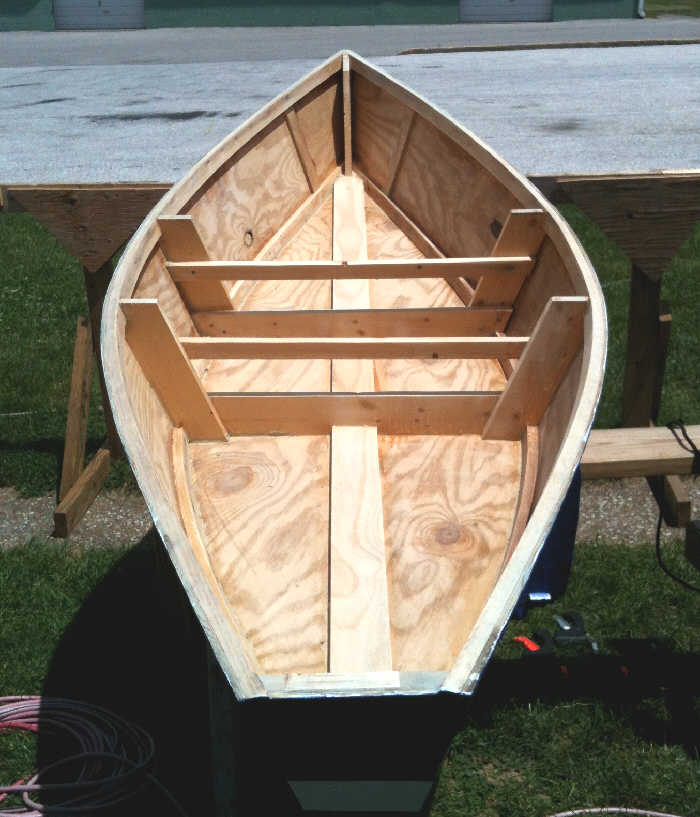
Comprehensive Wooden Sailboat Plans for Beginners and Experts
Building a wooden sailboat is a rewarding and challenging endeavor that can provide a lifetime of enjoyment on the water. Whether you're a seasoned craftsman or a novice boatbuilder, comprehensive plans are essential for a successful project. This article will guide you through the key aspects of finding and using wooden sailboat plans, catering to both beginners and experienced builders.
Choosing the Right Plans
The first step is selecting plans that align with your skills, experience, and desired outcome.
Skill Level
- Beginner: Opt for simple designs with straightforward construction methods. Consider smaller sailboats like dinghies or day sailers that emphasize ease of construction.
- Intermediate: Explore designs with more intricate details and larger boat sizes. Look for plans that offer detailed instructions and ample support.
- Expert: Challenge yourself with complex designs like classic yachts or high-performance racing boats. These plans demand advanced woodworking skills and meticulous attention to detail.
Boat Type
- Dinghy: Small, lightweight boats for recreational sailing and rowing, ideal for beginners.
- Day Sailer: Suitable for day trips and coastal cruising, offering more space and amenities than dinghies.
- Cruiser: Designed for extended voyages, offering accommodations for sleeping, cooking, and navigation.
- Racing Sailboat: Built for speed and performance, often featuring specialized hulls and rigging.
Boat Size
Consider your budget, storage space, and intended use when deciding on boat length. Smaller boats are generally easier to build and maintain, while larger boats offer more space and stability.
Plan Features
Look for plans that include:
- Detailed drawings of the boat's hull, deck, and other components.
- Comprehensive construction instructions with step-by-step guidance.
- Material lists specifying wood types, dimensions, and quantities.
- Sail plans and rigging diagrams.
- Support resources like online forums or contact information for the plan designer.
Sources for Wooden Sailboat Plans
You have several options for obtaining comprehensive wooden sailboat plans:
Online Retailers
Websites like:
- Boatplans.com
- Glen-L Marine Designs
- Ted's Woodworking
offer a wide range of wooden sailboat plans from various designers. They provide downloadable plans and often offer support through online forums.
Bookstores and Libraries
Many bookstores and libraries carry books with classic wooden sailboat plans. These books offer a wealth of knowledge and inspiration.
Boatbuilding Associations
Organizations like the **American Boat and Yacht Council (ABYC)** and the **Wooden Boat Society** often have resources and recommendations for finding wooden sailboat plans.
Individual Designers
Many experienced boat designers offer custom plans tailored to your specific requirements. They can create unique designs and provide personalized guidance throughout the building process.
Essential Tools and Materials
Before embarking on your boatbuilding journey, ensure you have the necessary tools and materials.
Tools
- Hand tools: Saws, planes, chisels, hammers, and screwdrivers.
- Power tools: Circular saw, jigsaw, drill, sander, and router.
- Measuring and marking tools: Tape measure, ruler, compass, and marking gauge.
- Clamps: A variety of sizes and styles for holding pieces together.
- Safety equipment: Eye protection, gloves, and dust mask.
Materials
- Wood: Marine-grade plywood, cedar, oak, mahogany, or other suitable wood species.
- Epoxy resin and hardener: For bonding wood and creating a waterproof seal.
- Fiberglass cloth and resin: For reinforcing the hull and deck.
- Fasteners: Screws, bolts, and nails designed for marine use.
- Paint and varnish: For protecting the wood and enhancing the boat's aesthetics.
Building a Wooden Sailboat
The boatbuilding process can be broken down into several key stages.
1. Preparation and Layout
- Study the plans thoroughly, understanding each step and detail.
- Prepare the building space, ensuring it is well-ventilated and has adequate lighting.
- Transfer the plans to the building surface using full-size patterns or templates.
2. Hull Construction
- Cut and shape the hull planks using saws, planes, and chisels.
- Join the planks together using epoxy resin and fasten them with screws or bolts.
- Apply fiberglass cloth and resin to reinforce the hull and create a watertight seal.
3. Deck and Superstructure
- Construct the deck framework and panels according to the plan's specifications.
- Build the cabin or cockpit structure, ensuring proper ventilation and water drainage.
- Install the hatch, portholes, and other deck fittings.
4. Finishing and Rigging
- Sand and fair the hull and deck to create a smooth surface.
- Apply paint, varnish, or other protective coatings to enhance the boat's appearance and durability.
- Install the mast, boom, sails, and rigging according to the plan's instructions.
Tips for Beginners
For novice boatbuilders, here are some essential tips for success:
- Start with a simple design: Choose plans for a smaller, less complex boat to gain experience.
- Take your time: Building a wooden sailboat requires patience and attention to detail.
- Ask for help: Don't hesitate to seek advice from experienced boatbuilders or join a local boatbuilding club.
- Practice your woodworking skills: Develop your skills through smaller projects before starting a boat.
- Follow the plans precisely: Adhering to the plans ensures a safe and functional boat.
Conclusion
Building a wooden sailboat is a rewarding journey that offers a unique sense of accomplishment. By selecting the right plans, gathering the necessary tools and materials, and following the building process carefully, you can create a beautiful and functional boat that will provide years of enjoyment on the water. Whether you're a beginner or an experienced builder, the journey of building a wooden sailboat is an adventure worth embarking on.

0 comments:
Post a Comment
Note: Only a member of this blog may post a comment.